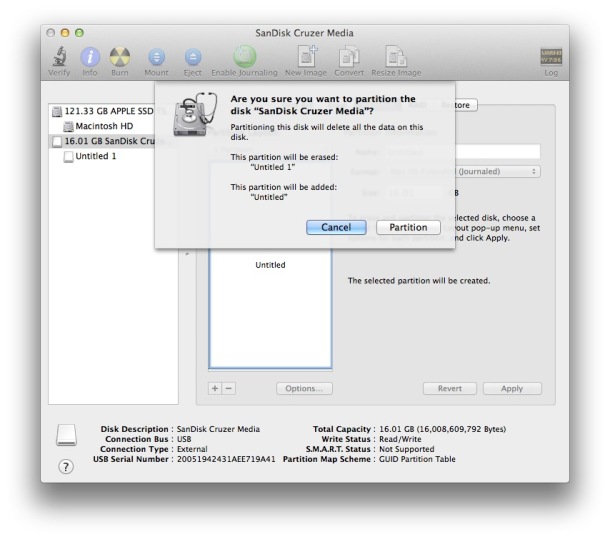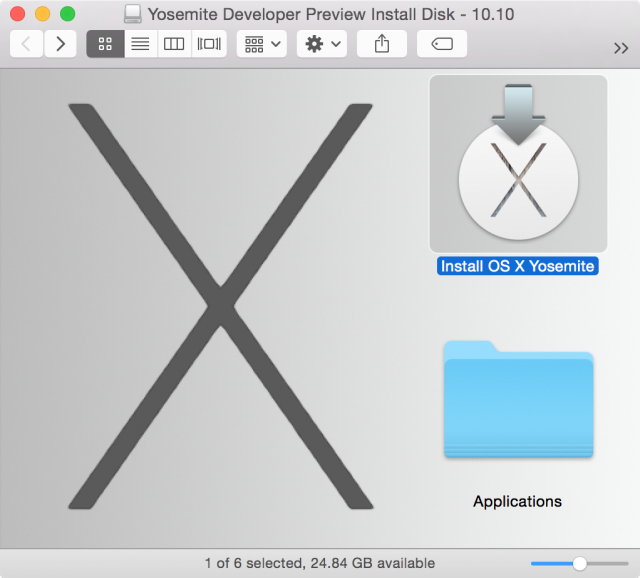- Oct 19, 2014 The instructions I found that worked, using Disk Utility, were located at How to Make a Bootable OS X Mavericks USB Install Drive and How to Create a Bootable Install USB Drive of Mac OS X 10.10 Yosemite. Download the Mac OS X 10.10 Yosemite. First, download the latest Mac OS X version, which is 10.10 Yosemite.
- Yosemite Bootable Usb Download Windows 10; To create bootable USB from ISO, some of you may choose to use USB bootable software like Rufus. It is thought as one of best, free, open-source and easy-to-use Windows 10 USB tool since it can create bootable USB for different kinds of operating systems. Step 1: Start USB bootable software, free.
Download a copy of Yosemite from Apple. Prior to launch you can get it here, and post launch it will be available in the App Store. Reformat your USB drive using Disk Utility. Jul 31, 2021 Download Os X Yosemite Bootable Usb Brief Guide For Download El Capitan In this article, we’ll also discuss few things that you should do before you upgrade your OS to the new Download El Capitan version in order to make sure your computer is all ready for the new upgrade including whether your Mac is compatible both in terms of hardware.
Update: Go to Install macOS Sierra Using Bootable USB Flash Drive if you want to install macOS 10.12 Sierra instead.
Update 2: The instructions below will work to manually create a Mac OS X 10.11 El Capitan USB installation drive. I needed to upgrade my sister’s 2008 Macbook Pro and found that the existing Mac OS X 10.6 Snow Leopard did not support the “createinstallmedia” tool; I got a “Failed to start erase of disk due to error (-9999, 0)” error. I followed the instructions below to successfully create a bootable installer for Mac OS X 10.11 El Capitan, which is the last version to support the 2008 Core 2 Duo Macbook Pro.

In this post, I will go over instructions on how to create a bootable USB flash drive containing the Mac OS X 10.10 Yosemite installer. These instructions will also work for Mac OS X 10.9 Mavericks (excluding a Yosemite-specific step) and differ significantly from the instructions for creating a Mac OS X 10.6 Snow Leopard installer. You will need an 8GB USB flash drive for Mac OS X Yosemite or Mavericks.
I tried several methods which failed to create a bootable USB flash drive before finding one that succeeded. The instructions I found that worked, using Disk Utility, were located at How to Make a Bootable OS X Mavericks USB Install Drive and How to Create a Bootable Install USB Drive of Mac OS X 10.10 Yosemite.
Download the Mac OS X 10.10 Yosemite
First, download the latest Mac OS X version, which is 10.10 Yosemite. It is the version currently available for download from the “App Store”. (If you want an earlier version like Mac OS X 10.9 Mavericks, you’ll need to get it from elsewhere.)
Launch “App Store” and search for “OS X Yosemite”. Download it. (It is 5.16GB in size.)
Note: If you run the Yosemite installer to upgrade your Mac, the downloaded installer file will be deleted automatically after the upgrade is completed. To keep that file, you will want to move it out of the Applications folder so it won’t be deleted after an upgrade. Launch the “Terminal” app and run this command to move the downloaded installer app to your user’s “Downloads” folder:
Create Bootable USB Flash Drive Installer
By default, the Finder will hide system files which we will need to see. Run these commands in the “Terminal” app to expose the hidden files:
defaults write com.apple.finder AppleShowAllFiles TRUE
# Close all Finder instances (and re-launch so settings take effect).
killall Finder
Prepare the USB flash drive:
- Plug in a USB flash drive of size 8GB or larger.
- Launch the “Disk Utility” to format the USB Flash drive.
- On the left-hand pane, select the USB drive (not the partition under it, if any).
- Click on the “Erase” tab, select “Mac OS Extended (Journaled)” for “Format” and input a name like “Install Yosemite” (or anything because this name will be overwritten later).
- Click the “Erase…” button at the bottom and then the “Erase” button in the popup dialog. This format operation should take less than a minute to complete.
Restore the Yosemite installation image to the USB flash drive:
- Launch the Finder and locate the “Install OS Yosemite.app” file. Right-click (hold the “control” key and click) on it and select “Show Package Contents”.
- Open Contents, then SharedSupport, and double-click on the InstallESD.dmg (disk image) file to mount it. A volume called “OS X Install ESD” will show up on the desktop and under DEVICES in the Finder.
- In the “OS X Install ESD” volume, right-click on the “BaseSystem.dmg” file and select “Open” to mount it. (Double-click won’t perform any action because it is a hidden file.)
- Use Disk Utility to clone the “BaseSystem.dmg” to the USB flash drive:
- Select the “BaseSystem.dmg” in the left-hand pane and click on the “Restore” tab. The “Source” field will be populated with “BaseSystem.dmg”.
- Drag the “Install Yosemite” partition under the USB flash drive to the “Destination” field.
- Click the Restore button and then the Erase button.
- The USB flash drive will be written with the contents of “BaseSystem.dmg” file. Depending on the speed of your USB flash drive, it may take several minutes or longer to complete this operation.
- Once complete, the “Install Yosemite” partition will be renamed to “OS X Base System”.
- Use the Finder to navigate to the USB flash drive. You will see two “OS X Base System” volumes in the Finder’s left-hand pane. The USB flash drive is the last one.
- Under the USB flash drive’s “OS X Base System” partition, open the “System/Installation” folder. You will see an alias file named “Packages”. Delete it because we will replace it with a “Packages” folder below.
- Use a second Finder window to open the “OS X Install ESD” volume. (To open a second Finder window, you can use the Finder menu’s “File/New Finder Window” command.)
- Copy the “Packages” folder from the “OS X Install ESD” volume to the USB flash drive’s “System/Installation” folder.
- Required for Yosemite (not required for Mavericks): Copy the “BaseSystem.chunklist” and “BaseSystem.dmg” files from the “OS X Install ESD” volume to the USB flash drive’s root “/” folder. If you don’t do this, you will get an “undefined error 0” when attempting to install Yosemite.
- The USB flash drive is now complete. You can use it to boot a Mac to install Mac OS X 10.10 Yosemite.
- Unmount all the Yosemite installer volumes by ejecting them; you must eject “OS X Base System” before “OS X Install ESD”.
Re-configure the Finder to hide system files. Run these commands in the “Terminal” app:
defaults write com.apple.finder AppleShowAllFiles FALSE
# Close all Finder instances (and re-launch so settings take effect).
killall Finder
/ElCapitanGetty-58618b7d5f9b586e0210af7e.jpg)
Boot With USB Flash Drive
To boot a Mac with the USB flash drive:
- Insert the USB flash drive.
- While holding the “option/alt” key down, turn on the Mac to display the boot Startup Manager.
- You should see one or two icons, one for the internal hard drive and/or another called “OS X Base System” for the USB flash drive. (The internal hard drive may not be visible if it does not have a bootable partition installed.)
- Note: If you don’t see the USB flash drive’s “OS X Base System”, try removing and re-inserting the USB flash drive while viewing the Startup Manager screen. The USB flash drive should then appear after a few seconds.
- Select the “OS X Base System” and hit the “return/enter” key to boot from the USB flash drive.
Hopefully, this post will help you to create your own bootable USB flash drive installer for Mac OS X 10.10 Yosemite or Mac OS X 10.9 Mavericks.
By Michael Argentini
Managing Partner, Technology and Design
Yosemite Bootable Usb Download Software
How do you erase your Mac hard drive and install OS X Yosemite without a startup disk? Normally the answer would be to boot into recovery mode. But what if you need to partition the hard drive, wiping the recovery partition? You need a bootable OS X Yosemite installer. Here's how to make one using Apple's built-in boot drive creation tool.
What You Need
- The 5GB OS X Yosemite installer app that downloads into your Applications folder when you first install it via the Mac App Store. The file name is Install OS X Yosemite. After you upgrade to Yosemite, this file is deleted. So you have to quit the installer once it appears in order to keep this file.
- A flash drive, external hard disk, SD card, or the like, with at least 8GB of capacity.
- Your Mac user account must be an Administrator. If it isn't, go to Users & Groups in System Preferences and assign Administrator to your user account. You can change it back to a standard user when you're finished. You can also sign in to your Mac as the administrator to create the bootable drive.
Step 1: Format Your Drive
First, you must partition and erase the drive so that it can be bootable. To do this, launch Disk Utility and choose the destination drive in the drive list (left column). On the right, in the Erase tab, choose to format the drive as Mac OS Extended (Journaled). These are the defaults, so just confirm the settings.
Next go to the Partition tab and under Partition Layout choose '1 Partition' in the dropdown menu. Change the name from 'Untitled 1' to 'Untitled'. This is so that the Terminal command below will find the drive. Once the process is complete, the drive name will be 'Install OS X Yosemite'.

Yosemite Bootable Usb Downloads
Click the 'Options' button. In the dialog that appears, choose 'GUID Partition Table' as the partition scheme, then click 'OK'. Again, this is the default, so just confirm the setting.
Finally, click 'Apply' to confirm the settings and prepare the drive.

Step 2: Make the Drive a Yosemite Boot Installer
In a single command you'll create the bootable install drive. Pretty sweet! To do this, launch Terminal and enter the following command. Note, this assumes that you haven't moved the installer out of your Applications folder. If you have, simply replace '/Applications' with the location of the installer:
The sudo command will ask for your password. As you type it will not appear. This is normal. Just enter it and press return to create the boot drive.
During installation, you'll see a progression of status messages.
Wait until you see a status of 'Done.' When you do, you can safely eject the drive and quit Terminal.
Step 3: Start Up from the Install Drive
Yosemite Bootable Usb On Windows
If you open the new bootable drive in the Finder, you'll notice that it appears empty, other than the Install OS X Yosemite app. No worries. The boot files are hidden, and the installer app allows you to upgrade without booting from the drive if you don't need to.

To boot from this new installer, shut down the Mac, plug in the bootable drive, and hold down the option key while powering back up. You should eventually see a series of bootable drives. Click on the one named 'Install OS X Yosemite' and press the return key.



